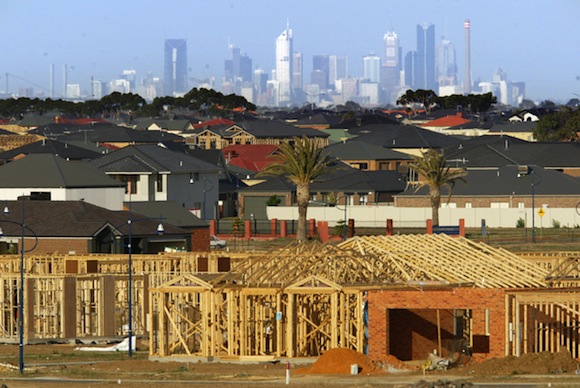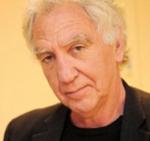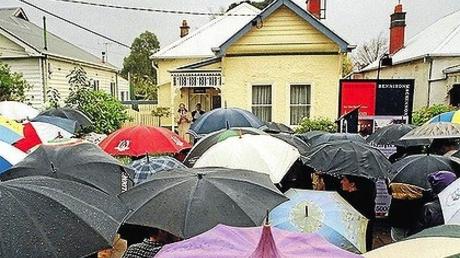
Forty years ago urban planning expert Professor Leonie Sandercock (in her 1975 book Cities for Sale) summarised three major chronic barriers to good planning in metropolitan Melbourne over the 20th century.
First, the local level of governance is weak within the Australian constitutional system, and metropolitan governance relatively rare - with the partial exception of Brisbane. Australian and Victorian politics have seen chronic over-representation by rural politicians, to the detriment of urban policy. Second, an equally chronic “instability” in Victorian politics - a combination of fluctuations between parties and internal factions within parties – has meant that, when growth was strong, there was “no time” for planning, and, when growth was weak, there was “no private development to steer”.
Finally, and as a consequence of these two governance issues, planning has been largely conservative, reactive and siloed, reluctant to “initiate and control urban development”, argued Sandercock, and tending to prefer improving “the efficiency of development”. Planning for housing affordability, transport, employment, and social infrastructure has been cordoned off from the land use planning system, which nationwide since European colonisation has favoured a fragmented approach and market-led responses over coordinated action for environmental sustainability and social justice.
Successful long-term visions are possible for metropolitan Melbourne, despite a dire record of conservative and vague visions within successive plans.
This is not to say that there have never been bold and successfully implemented visions for Melbourne. The "Hoddle Grid" setting out Melbourne’s first settlement in 1837 included a network of reserves for parkland at cardinal points around the new town, and emphasised “democratic” standard size allotments. The Salvation Army’s Major Brendan Nottle (in a paper published as part of the e-book Melbourne: What’s Next) also alludes to the social reform origins of Melbourne: the notion that it would be a rationally planned "good city", with access to recreation and high quality housing for both rich and poor. This initial plan for the city has shaped development of the central business district since that time.
The notion of green wedges, introduced under Liberal premier Henry Bolte in 1971, was intended to preserve non-urban land between development corridors, as close as 15 kilometres from the central business district. The vision here was to preserve viable agricultural land, including some of the most productive market gardens in Australia, delimit space for essential community infrastructure such as recreational reserves, and protect remnant indigenous vegetation. Green wedges have been under attack since their inception, particularly during the eight years of the allegedly sustainable growth strategy Melbourne 2030, but their legacy has remained in the north-eastern suburbs of the metropolis.
The successor Liberal premier, Sir Rupert Hamer, is associated with the development of Melbourne’s cultural infrastructure, with projects over several decades including the Victorian Arts Centre, the National Gallery of Victoria, the Museum of Melbourne, and Federation Square. He also established the Historic Building Preservation Council in response to destruction of architectural heritage in central Melbourne.
The development of both arts and sports precincts in central Melbourne were bold and ultimately successful approaches to de-industrialisation, with jobs and revenue arising from tourist dollars staving off mass unemployment predicted in the wake of the end of tariffs. Concurrent with the re-invention of central Melbourne as an “events destination” was its transformation from an “empty, useless city centre” (in the words of leading architect Norman Day in 1978) to a lively, walkable and mixed use “24 hour city”. While this vision stressed new economic opportunities through innovative approaches, it benefited the central city to the detriment of the outer suburbs, which lost industrial jobs without gaining new economy employment.
These visions are associated with individual (male) leadership: Robert Hoddle the original colonial surveyor, Premiers Henry Bolte and Rupert Hamer, and City of Melbourne Urban Design Director Rob Adams. This notion of visionary leadership appears antithetical to the recent planning mantra of collaborative planning, where the goal is to build shared conviction across diverse interests and complex problems.
But the simplified version of Melbourne’s history of successful planning visions ignores the capacity of these individual leaders to build on existing advocacy coalitions and ideas and, in turn, inspire long-term action. There was a Liberal-National coalition government in Victoria from 1955 to 1981, but the successor Labor Government of John Cain Jr. from 1982 to 1990 carried on with both the cultural regeneration and heritage focus of Hamer, along with urban containment and preservation of green wedges championed by Bolte.
Similarly, Rob Adams’ bold vision of the residential transformation of the CBD out-lasted political vagaries of left and right-leaning councils, and a State Government-imposed local government amalgamation and dismissal of elected representatives in 1995.
Successful long-term visions are possible for metropolitan Melbourne, despite a dire record of conservative and vague visions within successive plans. History shows such visions cannot be accomplished without both courageous leadership and broader advocacy coalition backing that leadership, which transcends electoral politics.
In recent times, metropolitan planning reform processes have mitigated against the development of a collective vision. The unveiling last year of Plan Melbourne, the state’s latest strategic metropolitan strategy, was met with widespread cynicism by local government, business, and civil society in relation to good planning.
Metropolitan Melbourne has endured five supposedly 20-to-40-year timeframe metropolitan strategies in as many decades; none, thus far, has outlasted a change in State Government. In regard to the three main planks of a good metropolitan strategy – laid out by Paul Mees in 2003 as “the shape and form of residential development, transport infrastructure, and the distribution of jobs and retailing” (to which we would add social infrastructure, including education, health and social services, environmental management, and community engagement), the past two strategies have had very poor outcomes indeed.
Housing affordability across the state, but particularly in Melbourne - which comprises 80 per cent of the state’s population - is at an all-time low. While Melbourne and other Australian cities frequently rate well in international business executive "liveability" ratings they also have some of the highest ecological footprints in the world. This is in large part due to the huge areal expansion of Australian cities, with public transport and social infrastructure investment lagging far behind suburban housing development. With a growing gap in access to employment and social and health services, the Ministerial Advisory Committee guiding Plan Melbourne warned of the emergence of “two Melbournes”, a “choice-rich” central city surrounded by “choice-poor” outer suburbs.
George Bush Sr. was once urged to spend one weekend thinking about his goals for the United States presidency before he successfully ran to succeed Ronald Reagan in 1988. He reportedly dismissed “that vision thing” as a waste of his time, since political power was the real goal. More recently, the Victorian Auditor General’s Office has criticised the Victorian State Government for not clearly articulating the benefits of major infrastructure projects, including road and rail infrastructure, within its strategic planning process.
But as many of the submissions to Plan Melbourne – and the controversy and critique around this city’s latest reinvention of a metropolitan strategy - have made clear, there is a growing concern, expressed by local governments, business, and civil society, that there is no real vision in Victorian state planning. It is possible that Victorian state planning has by this point simply become a matter of winning and wielding political power.
The two previous metropolitan strategies articulated an essentially conservative vision around maintaining Melbourne’s "liveability". But without a genuine commitment to engaging with local governments, business and civil society around conflicts and trade-offs, with no real implementation mechanisms such as funding key transport and infrastructure improvements or a solid urban growth boundary, and an absence of transparent monitoring mechanism, these strategic plans with a shared vision can easily be dismissed as tokenistic efforts, disguising ever more dependence on a market-based suburban sprawl approach to planning.
A nascent "counter-vision" in Melbourne is developing, based on a long planning tradition of small-scale self-governance, piecemeal transformation, and environmental preservation. However, Plan Melbourne and concurrent strategic planning initiatives such as new residential zones work against this environmental and social justice vision being realized.
So where to find hope? There are good practices elsewhere, including in Vancouver and London, two market-based metropolises in similar planning regimes, where vision informs infrastructure investment and transparent monitoring mechanisms and is in turn informed by some agreement amongst key actors. There are also examples from Melbourne’s past of visions that promote environmental sustainability and social inclusion outlasting changes in government.
The question is how to build a broad-based political movement that is able to outlast a change in government, and collaboratively build a vision that can address Melbourne’s existing and future challenges.
This is an edited extract of a chapter from a new peer-reviewed e-book 'Melbourne: What Next?', published by the University of Melbourne Sustainable Society Institute and Social Equity Institute which will be launched on Monday 13 October at the University of Melbourne. To attend the launch, or to find out how to download the book, click HERE.
Prof Carolyn Whitzman is Professor of Urban Planning at the University of Melbourne and co-editor of 'Melbourne: What Next?'
Prof Chris Ryan is Director of the Victorian Eco-Innovation Lab (VEIL) at the University of Melbourne.



